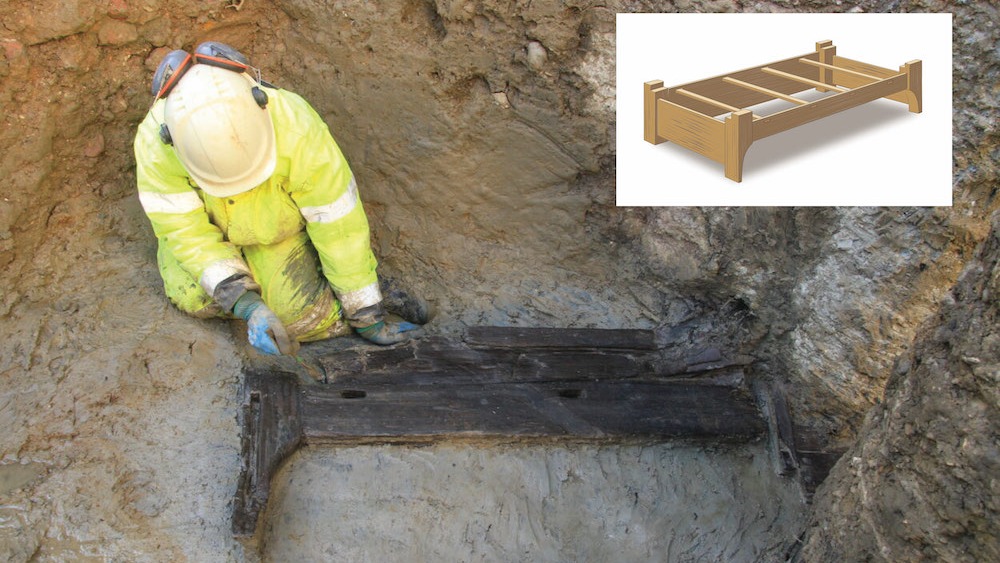1st-ever complete Roman 'bed burial' recovered from under London
In addition to the funerary items, archaeologists uncovered remnants of a tannery and a 16th-century cemetery.

Archaeologists have unearthed five 2,000-year-old Roman oak coffins, a funerary bed and skeletons at a construction site in London.
The excavation site, which is located nearly 20 feet (6 meters) below street level, was the final "resting place of some of Roman London's first residents," according to a statement by Museum of London Archaeology (MOLA).
While three previously known coffins made of Roman timber were found elsewhere in London from the Roman Britain period (A.D. 43 to 410), this marks the first time that a complete funerary bed has been discovered in Britain.
Crafted from oak, the bed includes carved feet and joints attached with small wooden pegs. Researchers determined the bed had been dismantled before being placed in the grave "but may have been used to carry the individual to the burial and was likely intended as a grave good for use in the afterlife."
Related: 2,100-year-old burial of woman lying on bronze 'mermaid bed' unearthed in Greece
"We know the Romans buried their dead alongside roads, outside of urban centers," Heather Knight, a senior archaeologist at MOLA, said in the statement. "So, it was no great surprise to discover burials at this site, which during the Roman period would have been located 170 m [558 feet] west of the city walls and next to the major Roman road of Watling Street. However, the levels of preservation we've encountered — and particularly uncovering such a vast array of wooden finds — has really blown us away."

The discoveries are well preserved because they were buried in the damp mud of the River Fleet, according to the statement.
Sign up for the Live Science daily newsletter now
Get the world’s most fascinating discoveries delivered straight to your inbox.
Being interred in bed was a funerary rite introduced by Christians in medieval Europe and was often practiced by members of the elite. Perhaps one of the most well-known bed burials is the Trumpington Bed Burial in Cambridge from the seventh century. The eastern England burial contained the remains of a young woman placed in a wooden bed surrounded by grave goods, including a cross made of gold and adorned with garnets.
In addition to the coffins and the five beds at the London site, researchers unearthed human skeletal remains and various personal effects, including beads, a glass vial and a decorative lamp that date to the very early Roman Britain period (A.D. 48 to 80).
They also found timber-lined wells and chalk floors that hint that the site was a tanning workshop in the 1200s. They turned up younger artifacts, as well, including a 15th- or 16th-century water pipe that may have been used to pump water on a ship and evidence of a cemetery from the 16th century.
Archaeologists from MOLA will continue excavations of the site throughout the year prior to the construction of a luxury office building.
Jennifer Nalewicki is former Live Science staff writer and Salt Lake City-based journalist whose work has been featured in The New York Times, Smithsonian Magazine, Scientific American, Popular Mechanics and more. She covers several science topics from planet Earth to paleontology and archaeology to health and culture. Prior to freelancing, Jennifer held an Editor role at Time Inc. Jennifer has a bachelor's degree in Journalism from The University of Texas at Austin.










